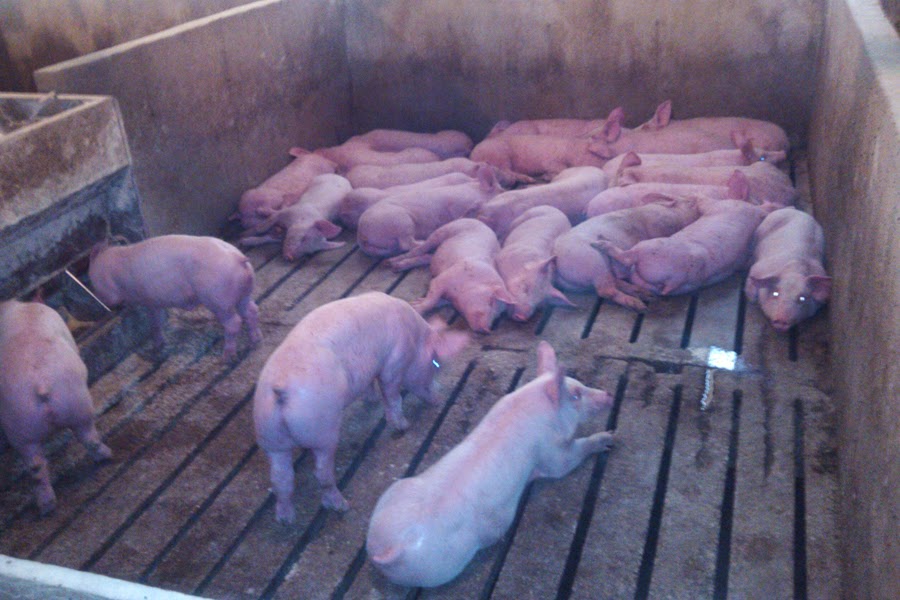Farmer’s Market Secrets
Farmer’s Markets are great,
but they aren’t all created equal. Tonight, I had an opportunity to listen to
Michele Aavang of Willow Lea Stock Farm talk for about an hour about all things
beef. Michele and her husband care for 60 (mother) cows and raise their calves
to finish weight. They sell their beef direct to the consumer through the Woodstock (Illinois
I presume that many of us go
to the farmer’s market to support a farmer directly by cutting out the
middle-man of our retail food chain, or to simply get the freshest produce
possible. In Michele’s talk, the biggest
surprise to me was that not all the vendors at the farmer’s market are
necessarily actually farmers. If a market is a “producers market,” like the
Woodstock Market, the market committee verifies that each vendor is, in fact,
the producer of the products they are selling. If the market is not a producers
market, vendors may be distributors. For example, if you see a vendor selling
bananas at an Illinois
So, how do you know? Ask
questions and talk to the farmer. Ask where is their farm located? If the
vendor is a distributor, obviously they won’t have a farm. Also, each farmer’s
market committee will have a different definition of “local.” If buying local
is important to you, distance may matter and you can find out directly. If you’re buying meat, ask where is their
feed from? A good answer, according to Michele, would be grass/hay and grain
(corn, possibly soybeans) along with added vitamins and nutrients. A not-so-good
answer would be (Michelle has actually heard this one) left-overs from a local
bakery. That’s just not a nutrient rich diet, obviously. Ask what is the age of
their animals? The older the animal, the tougher the meat becomes and flavor
changes.
If you are wondering about
the “grass-fed” label, this is how Michele explained it to us. First of all, if
the label says “100% grass-fed,” then that is all the animal ate. In northern
climates, 100% grass-fed isn't attainable, because our grasses go dormant in
winter months. Animals in the north can be labeled “grass-fed” and this means
they were likely in a pasture April – October; and then from Oct – April, they were fed
hay.
Michele cited Nebraska and northern Texas , along with New
Zealand and Australia
If beef is not labeled "grass-fed," they should be eating grass, hay, corn, sileage, and soybeans mixed with added vitamins and nutrients. Each farmer works with a nutritionist to determine what the dietary needs are.
If beef is not labeled "grass-fed," they should be eating grass, hay, corn, sileage, and soybeans mixed with added vitamins and nutrients. Each farmer works with a nutritionist to determine what the dietary needs are.
Michele also did some
myth-busting for us. She talked about corn, GMO corn, growth hormones, and
antibiotics. She also explained why the price of beef is so high.
She has never heard of
anyone feeding only corn to their cattle; she said there has to be a mix of a
long fiber (like grass or hay) in the mix to maintain the health of the
animals. She told us corn does not make cattle sick, despite what we may have
seen or read on the internet. Grains help make meat taste better and it
increases the (USDA) grading.
She told us she raises
non-GMO corn to feed to her cattle because that is what her customers request.
She also raises GM corn to sell on the commodities market. She does not believe
GM corn is unhealthy for us or the animals. If you want non-GMO meat, look for the USDA certified organic label.
She does not use growth hormones
on her cattle, but said of those hormones, they are absorbed into the animal’s
body and any trace remaining would be so minuscule it should not be a concern
to us.
Of antibiotics, she said
that beef farmers are not over-using antibiotics. They will use them on sick
animals, but the farmers follow standard withdrawal periods for antibiotics before sending them for processing. In feedlot
operations, a new load of arriving cattle may be given a low-dose to prevent
illness. Again, if you want hormone-free or antibiotic free meat, look for the USDA certified organic label.
She said one of the reasons
the price of beef is high is because of the drought in 2012. Many southwestern
farms had to sell off their herds because there wasn't enough feed available. Cows don’t give birth until two years of age, and then a calf isn't ready for
market until somewhere around 14-16 months of age. So, to build up the
livestock again simply takes time.























